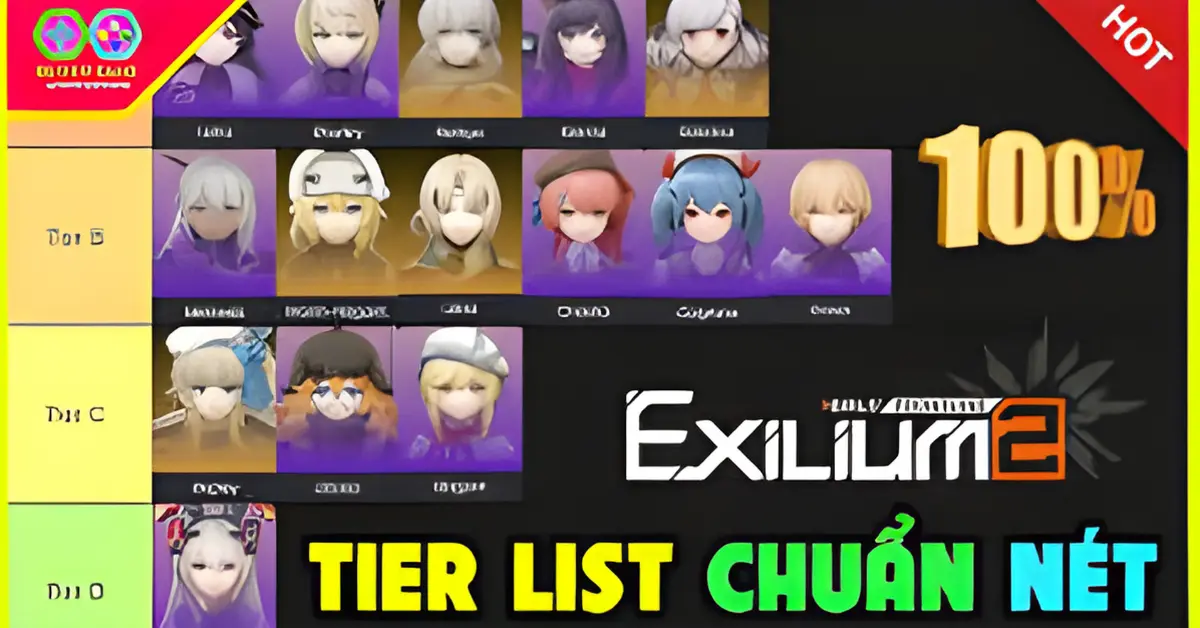If you’ve ever spent money to summon a rare character, unlock a powerful weapon, or open a mystery loot box in a mobile game, then you’ve contributed to gacha revenue — one of the most profitable and sophisticated monetization systems in the world of gaming.
What began as a quirky mechanic inspired by Japanese capsule toys has evolved into a multi-billion-dollar business model that dominates mobile gaming and increasingly influences console, PC, and Web3 titles. Gacha is no longer just a feature — it’s a strategic engine powering player engagement, developer profits, and even entire digital economies.
This guide explores every angle of gacha revenue — from how it works and why it’s so effective to the psychology behind spending, how developers design for profit, and what the future holds. Whether you’re a gamer, developer, marketer, or investor, understanding the mechanics and business logic behind gacha is key to understanding the future of interactive entertainment.
Table of Contents
ToggleKey Takeaways: What You’ll Learn About Gacha Revenue
- Gacha revenue is one of the most profitable monetization models in gaming, generating billions of dollars annually from microtransactions and randomized rewards.
- The system originated from Japan’s gachapon capsule toys and evolved into a global phenomenon used in over 60% of top-grossing mobile games.
- Games like Genshin Impact, Fate/Grand Order, and Dragon Ball Z: Dokkan Battle have earned $1 6 billion+ each, showing the model’s massive earning potential.
- Psychology is key: Gacha exploits human behaviors like variable rewards, FOMO, sunk cost fallacy, and social status to drive spending.
- Whales (top spenders) contribute over 50% of revenue, while free players still fuel engagement and retention.
- Developers design gacha systems with data-driven economics, limited-time banners, pity systems, and live operations to maximize profit and trust.
- Future innovations — including AI personalization, blockchain ownership, social gacha mechanics, and cross-platform expansion — will push revenue potential even higher.
- Regulatory changes are shaping the industry, with drop rate disclosures, spending limits, and ethical design becoming increasingly essential.
- Players can enjoy gacha responsibly by setting budgets, saving for key events, and avoiding impulsive spending.
What Is Gacha? From Capsule Toys to Cash Flow Machines
The word “gacha” originates from “gachapon”, a type of Japanese vending machine that dispenses random capsule toys. The element of randomness and surprise was central to the appeal — and game developers realized they could recreate the same excitement digitally.
In gacha games, players use in-game currency (often bought with real money) to “pull” for random items, characters, cosmetics, or other rewards. Some pulls are common and easily obtained, while others are rare, powerful, and highly sought-after. The allure of possibly getting that rare prize keeps players engaged and spending.
Today, gacha is more than a mechanic — it’s the economic backbone of free-to-play (F2P) games. Rather than charging an upfront price, developers offer free downloads and monetize player enthusiasm over time.
The Global Rise of Gacha Revenue
Gacha games exploded in popularity in Japan in the early 2010s. Titles like Puzzle & Dragons, Granblue Fantasy, and Fate/Grand Order proved that a free-to-play model with randomized rewards could generate massive profits. Players weren’t just buying games — they were investing in collections, characters, and communities.
The model soon went global. Western developers adapted gacha mechanics for their audiences with titles like Summoners War, Fire Emblem Heroes, and Raid: Shadow Legends. But it was Genshin Impact in 2020 that shattered all records. The open-world RPG surpassed $1 billion in revenue in just six months, redefining expectations for free-to-play games.
Today, gacha-driven titles account for more than 60% of the top-grossing mobile games worldwide, and analysts expect the model to remain dominant well into the next decade.
How Gacha Games Make Money: The Revenue Engine Explained
The strength of the gacha model lies in how it combines multiple monetization strategies into one cohesive system. Here’s how developers turn free downloads into billions of dollars in revenue.
1. Microtransactions and Premium Currency
Gacha games rely on microtransactions — small purchases of premium currency used to make pulls. Prices usually range from $0.99 to $99.99, but players often make repeated purchases over time. Even if most players spend little or nothing, a small percentage who spend heavily can sustain enormous profits.
2. Limited-Time Events and FOMO
Exclusive banners and time-limited characters create urgency and drive spending spikes. Players fear missing out on powerful or rare content, so they’re more likely to spend impulsively during these events.
3. Pity Systems and Reward Loops
Most modern gacha games include a pity system, guaranteeing a rare pull after a certain number of attempts. This keeps players motivated to continue spending, knowing that each pull brings them closer to a guaranteed reward.
4. Whales, Dolphins, and Minnows
Gacha revenue relies heavily on whales — a small group of players who spend hundreds or even thousands of dollars. Mid-tier spenders (“dolphins”) and casual players (“minnows”) provide additional income. This tiered spending system ensures that revenue remains stable and diversified.
The Psychology of Gacha Spending: Why It Works So Well
The gacha model taps directly into human psychology. Its design exploits behavioral patterns that keep players engaged, motivated, and spending.
🎰 Variable Reward Systems
Humans are wired to pursue uncertain rewards. The randomness of gacha pulls mimics the psychological mechanics of gambling, triggering dopamine hits with every attempt — win or lose.
💸 Sunk Cost Fallacy
Once players have invested time or money into a game, they’re more likely to continue spending to “justify” their previous investment.
🏆 Social Proof and Prestige
Rare items and characters act as digital status symbols. Players who obtain them are often celebrated within the community, which motivates others to spend for the same recognition.
⏳ Fear of Missing Out
Time-limited events and exclusive banners amplify urgency. Players don’t want to miss an opportunity that may never return, so they’re more willing to spend quickly.
The Biggest Gacha Success Stories: Billions in Action
The financial success of gacha games is almost unparalleled. Here are some of the most profitable titles in history:
|
Genshin Impact
|
HoYoverse | $6.3+ billion | 2020 |
|
Fate/Grand Order
|
Aniplex | $5.2+ billion | 2015 |
|
Dragon Ball Z: Dokkan Battle
|
Bandai Namco | $3.5+ billion | 2015 |
|
Uma Musume: Pretty Derby
|
Cygames | $2.5+ billion | 2021 |
|
Fire Emblem Heroes
|
Nintendo | $1.2+ billion | 2017 |
Each of these games continues to generate hundreds of millions of dollars annually, proving the long-term profitability of the gacha model.
Regional Revenue Trends: Where Gacha Thrives
Gacha’s popularity and profitability vary by region, shaped by cultural preferences and regulations:
- 🇯🇵 Japan: The birthplace of gacha. Japanese players have deep cultural ties to character collecting, and ARPU (average revenue per user) is among the highest in the world.
- 🇨🇳 China: Massive scale but strict regulations. Developers must disclose drop rates and adapt to government policies, but the player base is huge.
- 🇰🇷 South Korea: Competitive elements and PvP modes drive spending.
- 🌍 Western Markets: Lower per-user spending but larger audiences. Titles often rely on big IPs (like Marvel or Star Wars) and deeper storylines to convert players.
Behind the Scenes: How Developers Design Gacha for Profit
Building a successful gacha system requires more than luck — it’s a science. Game studios use analytics, psychology, and game design principles to maximize revenue while maintaining player trust.
1. Data-Driven Economy Design
Developers track everything: pull rates, spending patterns, retention curves, and banner conversion rates. This data informs decisions about drop rates, pricing, and content schedules.
2. Event Cadence and Content Cycles
A well-timed content schedule is crucial. Most games follow a 6–8 week cycle: a major banner, a secondary rerun, and smaller events in between to sustain engagement.
3. Balancing Free and Paid Progression
To avoid accusations of “pay-to-win,” developers offer free rewards and pathways to rare items. However, paid players get faster and more reliable access.
4. Community and Creator Marketing
Influencers, livestreamers, and YouTubers play a huge role in gacha promotion. Pre-banner teasers, summoning videos, and tier-list debates create viral hype that drives conversion.
Beyond Summons: Diversifying Revenue Streams
While gacha pulls remain the main source of income, top games expand their revenue potential with complementary systems:
- 🎟️ Battle Passes: Monthly subscriptions offering guaranteed rewards and premium perks.
- 💎 Cosmetics and Skins: Non-essential but desirable vanity items that boost revenue without affecting gameplay balance.
- 📦 Starter Packs and Resource Boosts: Targeted offers designed to convert free players into payers.
- 🛍️ Collaboration Events: Limited crossovers with popular anime or brands that drive temporary revenue surges.
The Business Numbers: Gacha by the Data
The numbers behind gacha’s success are hard to ignore:
- The global gacha market was valued at $35 billion in 2024 and is projected to surpass $55 billion by 2030.
- In some top games, over 70% of total revenue comes from gacha pulls.
- “Whales” make up 2–5% of the player base but contribute over 50% of revenue.
- Monthly spending spikes can increase revenue by 200–300% during major banner events.
These statistics underline why gacha has become the preferred monetization model for developers worldwide.
Regulation and Ethics: The Industry’s Greatest Challenge
Despite its profitability, gacha has faced significant criticism. Many argue it closely resembles gambling, particularly for younger audiences. Regulators have started responding:
- Drop Rate Disclosure: Many countries require developers to publish the odds of obtaining rare items.
- Spending Caps: Some regions have imposed limits on how much minors can spend.
- Outright Bans: Belgium and the Netherlands have banned certain gacha systems entirely.
Ethical design — including transparent mechanics, guaranteed rewards, and spending controls — is becoming increasingly important for both compliance and player trust.
The Future of Gacha Revenue: What’s Coming Next
Gacha isn’t standing still. Here’s how the model is evolving:
🤖 AI-Powered Personalization
Developers will use AI to tailor banners, offers, and events to individual player behavior — increasing engagement and monetization efficiency.
🔗 Blockchain and Digital Ownership
Web3 games will allow players to own, trade, and sell their gacha rewards as NFTs, adding real-world value to virtual assets.
🌐 Cross-Platform Expansion
Gacha mechanics are spreading beyond mobile to consoles, PC, VR, and AR platforms, unlocking new audiences and revenue streams.
👫 Social and Collaborative Gacha
Future games will introduce group pulls, guild-based banners, and cooperative summoning events to deepen engagement and social interaction.
Tips for Players: Enjoying Gacha Responsibly
While gacha can be fun, it’s easy to overspend if you’re not careful. Here’s how to keep your experience healthy and enjoyable:
- 💳 Set a Monthly Budget: Decide in advance how much you’re willing to spend.
- 🎯 Save for Key Banners: Prioritize characters or items that truly matter to your playstyle.
- 🆓 Use Free Currency First: Take advantage of daily rewards, events, and missions before purchasing.
- 🧠 Avoid Impulse Pulls: Plan your strategy rather than spending impulsively.
Final Thoughts: Gacha Revenue Is Here to Stay
From humble beginnings in Japanese toy machines to powering billion-dollar global franchises, gacha revenue has transformed the gaming industry. It’s more than a monetization method — it’s a sophisticated business model built on psychology, technology, storytelling, and community engagement.
The future of gacha is bright. With advances in AI, blockchain, cross-platform integration, and more ethical design practices, the next generation of gacha games will be even more immersive, personalized, and profitable.
Whether you’re a gamer chasing your dream character or a developer designing the next big hit, understanding how gacha revenue works is essential. It’s not just a feature — it’s the beating heart of modern gaming economics.
❓ Frequently Asked Questions (FAQs) About Gacha Revenue
1. What is gacha revenue in gaming?
Gacha revenue refers to the money earned by games that use a “gacha” or randomized reward system. Players spend real money (or in-game currency) to pull or summon random characters, items, skins, or upgrades. This monetization model powers many free-to-play games and can generate billions of dollars in revenue annually.
2. Why do people spend money on gacha games?
People spend money on gacha games because they’re driven by psychological factors like excitement, curiosity, and the desire to collect rare items. The random reward system triggers dopamine release, while mechanics like FOMO (fear of missing out), sunk cost fallacy, and social status make players more likely to spend repeatedly.
3. Which gacha games make the most money?
Some of the top-earning gacha games include:
- Genshin Impact – Over $6.3 billion
- Fate/Grand Order – Over $5.2 billion
- Dragon Ball Z: Dokkan Battle – Over $3.5 billion
- Uma Musume: Pretty Derby – Over $2.5 billion
- Fire Emblem Heroes – Over $1.2 billion
These titles prove that gacha mechanics can sustain long-term, recurring revenue for years after release.
4. Is gacha considered gambling?
While gacha shares some similarities with gambling — such as spending money for a chance at a random reward — it is not legally considered gambling in most countries. However, some regions, like Belgium and the Netherlands, have banned or regulated gacha mechanics due to their resemblance to gambling systems.
5. How do developers design gacha systems to make money?
Game developers use data-driven strategies to maximize revenue. They design limited-time events, pit systems, and exclusive banners, and they analyze spending behavior to optimize pricing and drop rates. They also release frequent updates, collaborate with brands, and work with influencers to keep players engaged and spending.
6. How much of Gacha revenue comes from “whales”?
“Whales” — the small percentage of players who spend heavily — typically make up less than 5% of the player base but contribute over 50% of total gacha revenue. This is why many games offer special incentives, exclusive items, and prestige rewards to retain these high-value customers.
7. Can you enjoy gacha games without spending money?
Yes! Many gacha games offer free pulls, daily rewards, and event-based currency, allowing players to collect items without spending real money. Strategic saving, smart decision-making, and patience can make free-to-play gameplay rewarding — though paid players often progress faster.
8. What is the future of gacha revenue?
The future of gacha monetization looks promising. Expect AI-driven personalization, NFT and blockchain integration, cross-platform expansion, and more social, cooperative gacha mechanics. As the industry matures, ethical design and regulatory compliance will also become increasingly important.
9. Are gacha mechanics used outside of gaming?
Yes. The gacha concept has influenced other industries, too. E-commerce platforms, NFT projects, and even subscription box services use similar “random reward” models to drive engagement and spending.
10. How can I avoid overspending on gacha games?
To prevent overspending:
- Set a clear monthly budget and stick to it.
- Use free currency from events and daily rewards first.
- Save for banners or characters that truly interest you.
- Take breaks and avoid impulsive pulls when new events launch.






